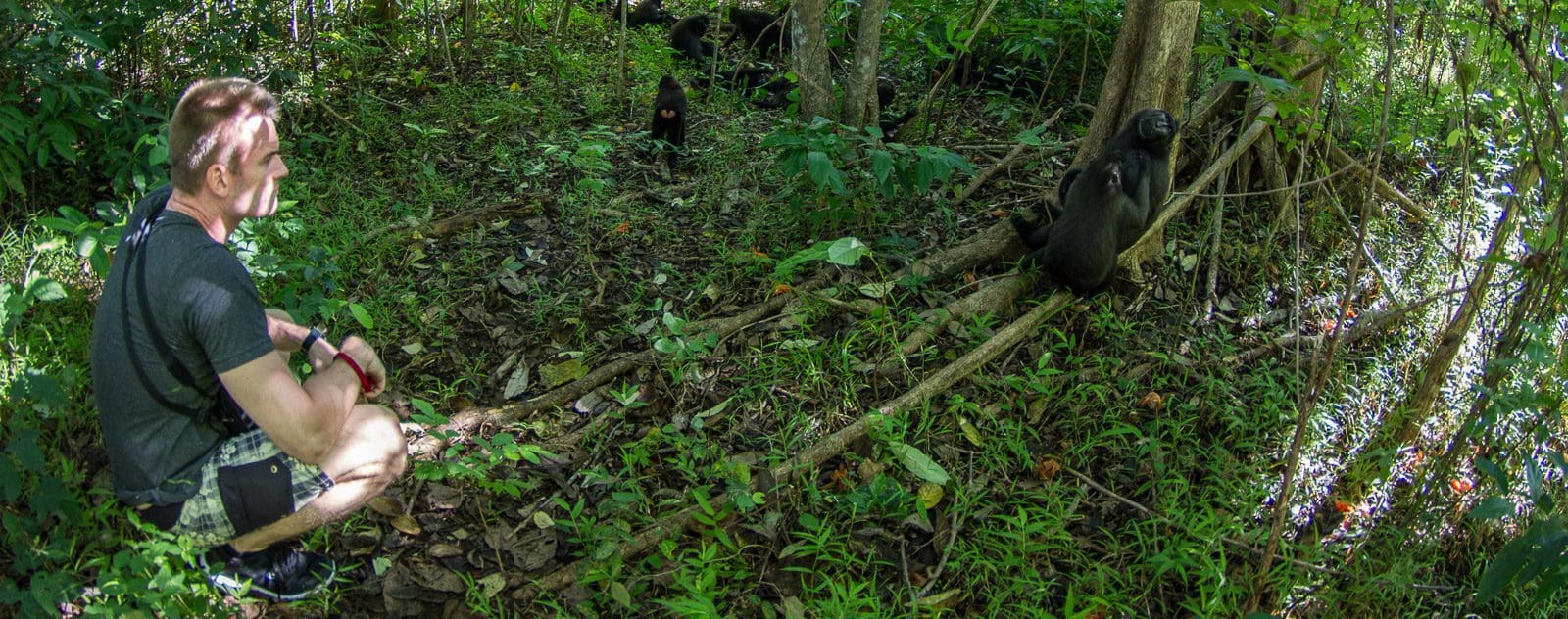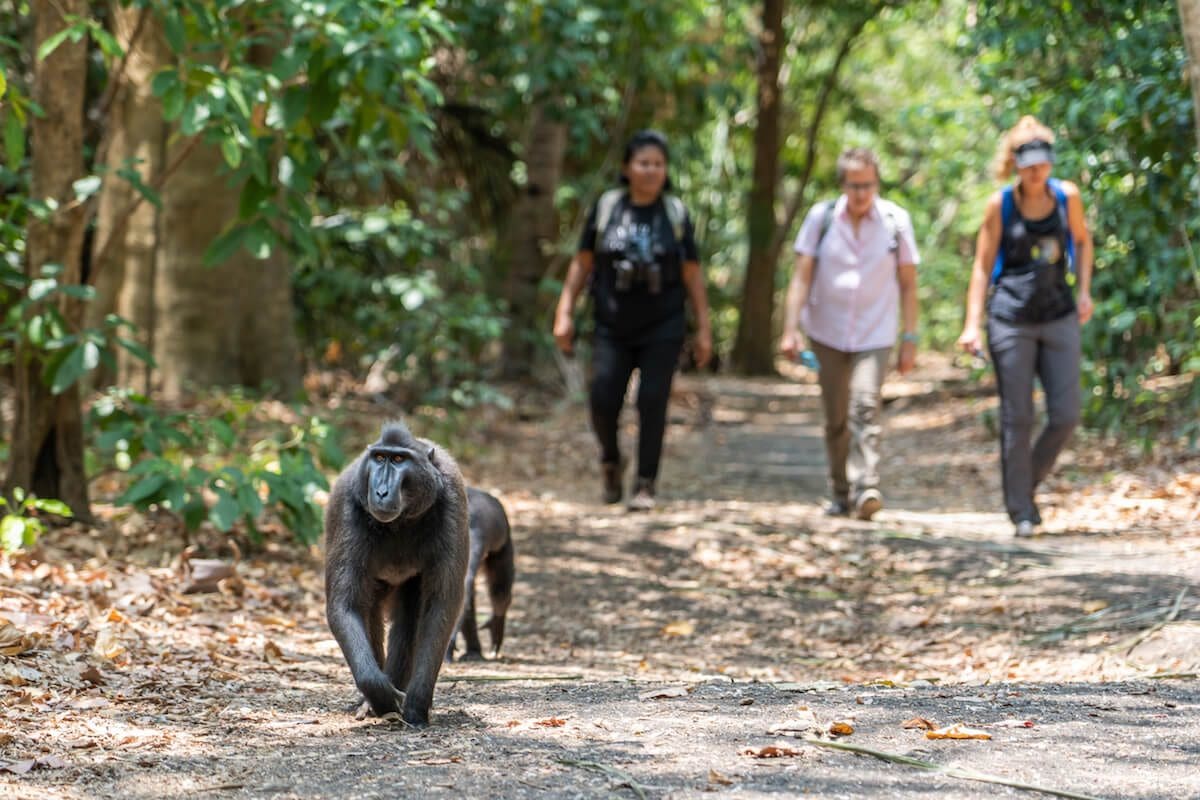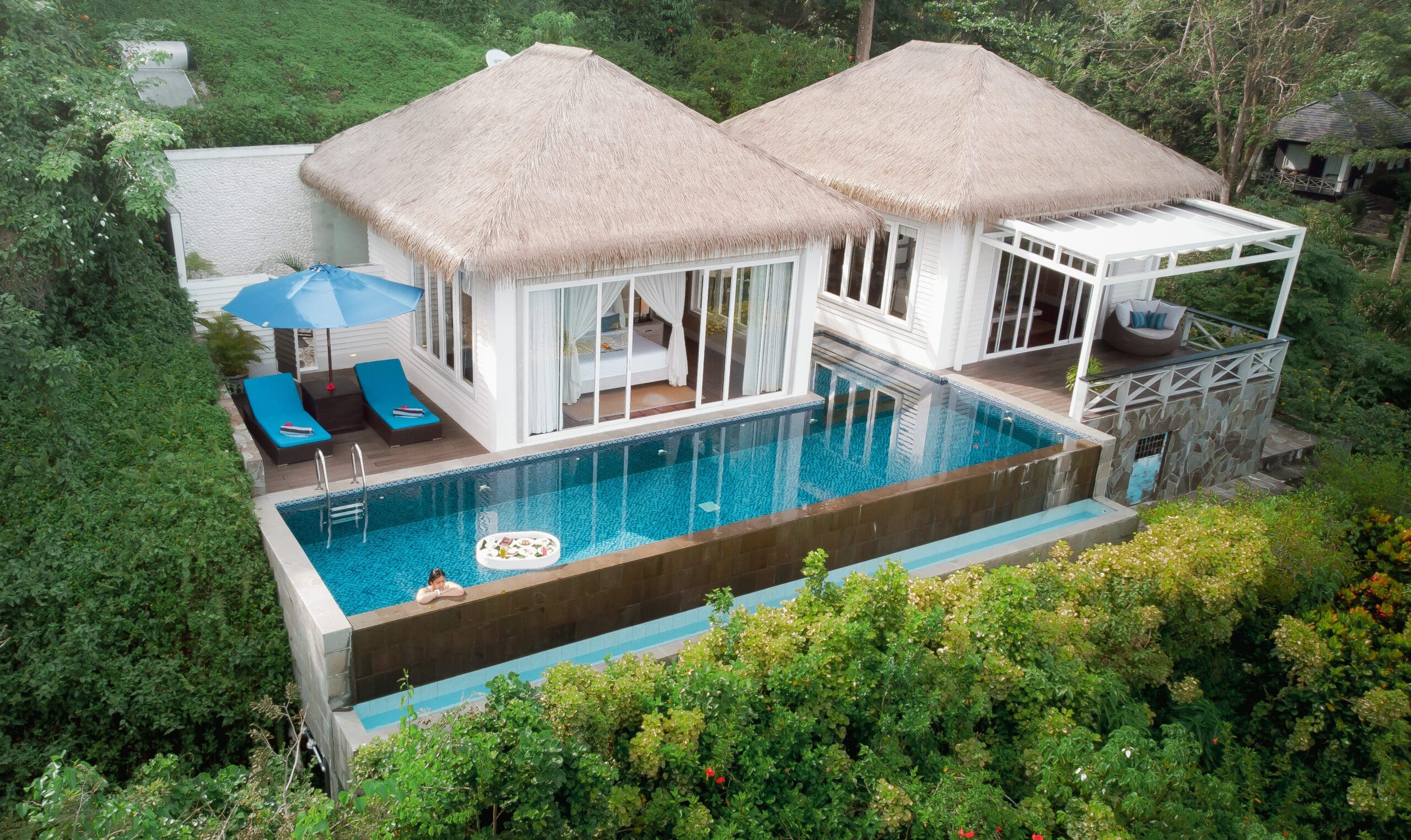Saving the Crested Macaques: A Journey to Protect the Endangered Primates of North Sulawesi
The Tangkoko Nature Reserve is just a 90 minute drive from Lembeh Resort and it’s one of the best places in North Sulawesi to experience sightings of the Celebes crested macaque. These beautiful macaques (Macaca nigra) that are also known as the Sulawesi black macaque, the crested black macaque, and the black ape, are endemic to North Sulawesi. In this Blog we take a look at what makes them such a special species.
Macaques and Conservation in North Sulawesi
Black macaques are known locally as “yaki” or “wolai” and in the Tangkoko Nature Reserve they typically live in the wild in groups of 25 to 75 individuals. All wildlife in the Nature Reserve is protected from illegal hunting and poaching and the troops of macaques found here are thriving.
The Sulawesi black macaque is a protected species but in the wild, outside of the park, there are still some issues with hunting these beautiful creatures either to sell on the black market and for bushmeat. It is this illegal hunting that has resulted in a decline in the numbers and the Celebes crested macaque is officially listed as critically endangered by the IUCN.

Celebes Crested Macaque Habitat
While the Celebes crested macaque is an excellent tree climber, they spend the majority of their time during the day on the ground in social groups. It’s not unusual to see them foraging for food, playing, or grooming each other. However, they will take to the trees to sleep overnight – or when there is little food available on the ground.
Size and Physical Characteristics
Sulawesi black crested macaques are one of the smaller species of macaque with males measuring up to 57 cm and females just 45 cm in height. Black crested macaques (as the name suggests) are entirely jet back with the exception of some white hairs appearing in the shoulder region and on the back of the neck.
They have stunning rich brown eyes which gives their faces a very ‘human-like’ appearance. Facially they also have high cheekbones and a long muzzle. They take their name from the long tuft of hair that sprouts from the top of their heads.
Celebes Crested Macaque Diet
The Celebes crested macaque eats mainly fruits (70% of its diet), leaves, buds, seeds, fungus, birds and bird eggs, insects (such as caterpillars) and even the occasional small lizard or frog! They are excellent foragers and feed from the ground as well as in tree canopies.

Celebes Crested Macaque Social Behavior
In small troops of macaques there will be only one male and the others are females. In the larger troops that we see in Tangkoko, there may be several males but generally speaking females will outnumber males on a scale of approximately one male to four females.
When juvenile males reach sexual maturity they are forced to leave the group. They may form bachelor groups before trying to assert themselves as a male in another group or attempting to move back into their birth group.
Mating, Reproduction, and Life Cycle
The Celebes crested macaque is promiscuous and both males and females will have multiple mating partners. Females are highly identifiable around mating time as they will display bright red buttocks to let the males know that they are ready.
Once pregnant, females have a gestation period of 174 days and after giving birth they will nurse their young for around one year. In the wild, Sulawesi crested black macaques have an estimated life expectancy of 15-20 years.
Visiting the Tangkoko Nature Reserve
Taking a day trip to the Tangkoko Nature Reserve is an absolute must for any nature enthusiast or photographer. This region of forest carpets a lush rolling green landscape between the base of the two Dua Saudara volcanic peaks.

The park rangers are experts at spotting the wildlife and birdlife that resides here which includes the Celebes crested macaque, tarsier monkeys (the world’s smallest primate), cuscus bears, knobbed hornbills, Maleo birds, kingfishers, Sulawesi owls, monitor lizards, and an array of other tropical birds, insects, flora and fauna.
We depart from Lembeh Resort by boat (15 minutes to the mainland) and then it’s a short car drive to the entrance of the park and the ranger station. During the tour you’ll trek through the forest while your ranger guides you – with the intention of having some impressive wildlife sightings. The level of difficulty of the trek can be adjusted from easy to more strenuous according to your comfort and fitness levels.
To see tarsier monkeys, we stay in the park until around 5pm when the light starts to fade and they become active. After we’ve spotted these tiny creatures, we head back to Lembeh Resort for a well earned delicious dinner served in the restaurant!
Stay at Lembeh Resort

Stay and Explore Lembeh Resort
Are you planning your next trip to Lembeh? Enhance your stay by joining us for a day out to Tangkoko or indulging in Lembeh’s captivating land tour. We highly recommend adding this tour to your itinerary, especially on your last day before flying out when your gear is drying out – it’s the perfect way to conclude your stay!
Discover Lembeh Resort Rates and Reserve Your Memorable Stay. Visit our website to explore Lembeh Resort rates and find the ideal package for your upcoming trip. Immerse yourself in luxurious accommodations, exceptional service, and unforgettable experiences at Lembeh Resort.
For more information or to make a reservation, please contact us at reservations@LembehResort.com.
FURTHER READING
If you enjoyed reading this Blog, you may also be interested in:


